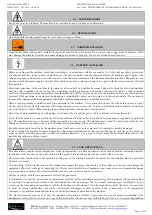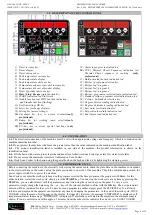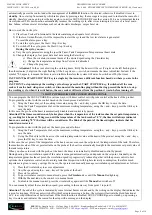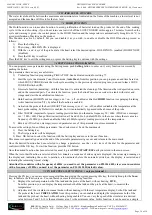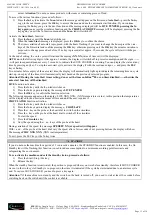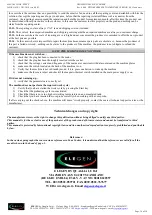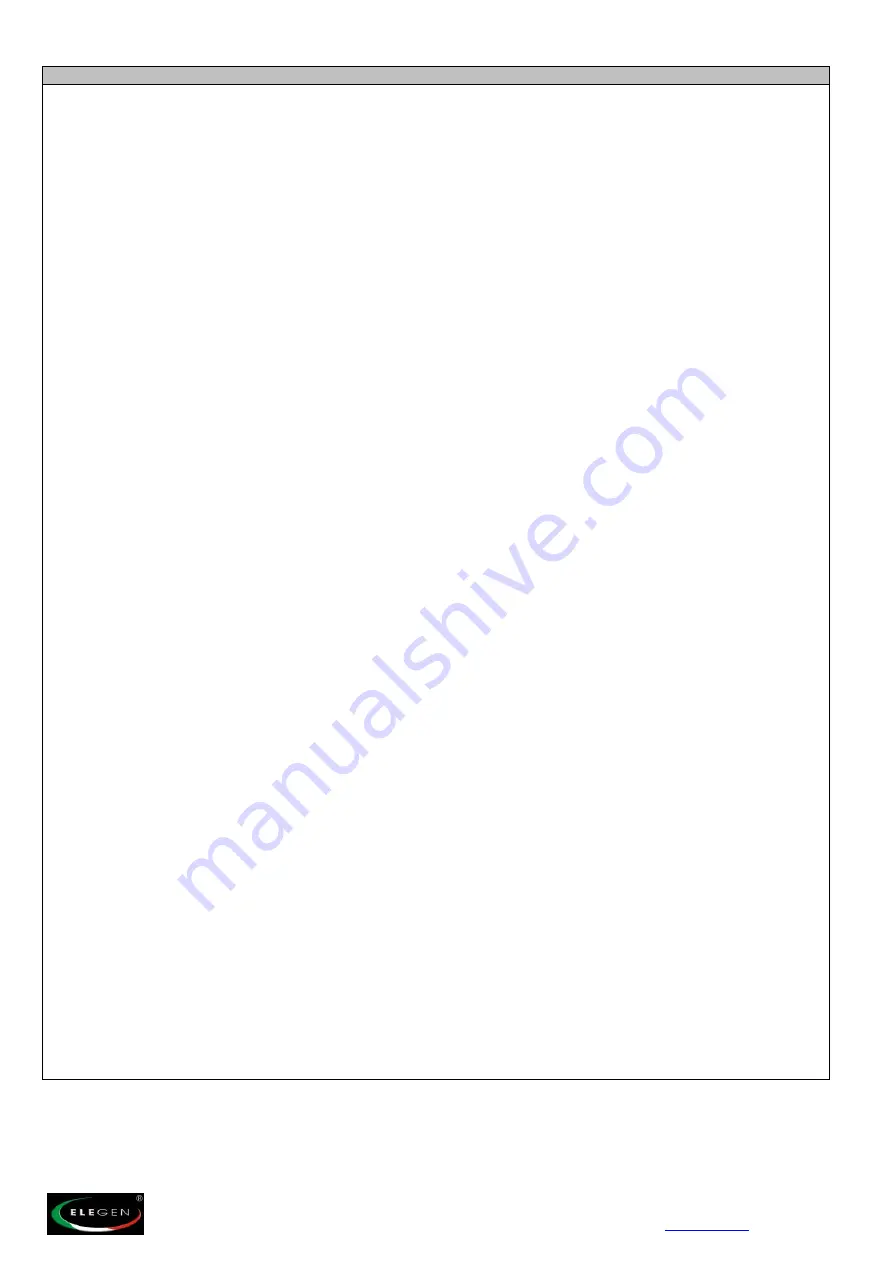
MANUAL CODE: XXXXX
PROFESSIONAL SOUS COOKER
ISSUE DATE: 15/01/2018 vers_00_05
Rev. 00.00 WITH REFERENCE TO FIRMWARE VERSION :00_15 and more
ELE
GEN
by Quaglia Luigi - Via Jmre Nagy 8-8/A 42019 - Scandiano Reggio Emilia Italy- VAT No. 02018620357
TEL.+390522859721 – FAX +390522767677 -
VOIP Skype. eleg2002
- Web-www.elegen.it - email
Page 7 of 16
4.0 Low-temperature cooking: Why using it and what are the advantages?
Probably the first scientist to experiment and conduct research on low temperature cooking was the British physicist
Benjamin Thompson in the eighteenth century. His experiments were then repeated by the Hungarian physicist
Nicholas Kurti, a professor of physics at Oxford University, who left 2 kg of lamb in an oven at 80°C for 8.5 hours. At
the end of the 8.5 hours he verified that the internal and external temperature of the meat reached 75°C evenly and it
was much more tender and juicy. Kurti was one of the first T.V. chefs in a programme "The Physicist in the Kitchen"
in 1969 in England and was a dedicated proponent of molecular cuisine.
Modern low-temperature cooking, also referred to today as "Sous vide", evolved in the 1970s due to a French chef named
George Pralus.
Many of us will remember the mornings and afternoons spent with our grandmothers in the kitchen amidst the steam rising
from saucepans that seemed to bubble away endlessly, hours and hours of cooking over a low heat vegetables, meat and
anything else that sprang to mind. This is what low-temperature cooking is about, an ancient tradition that is still popular today.
However Pralus had the intuition to combine vacuum with this cooking method, that is placing food under under vacuum and
cooking it at a low temperature, thus creating this innovative cooking method most commonly known as Sous Vide. It was a
true revolution supported by solid scientific research performed by nutritionists and with the support of a French university.
Chef Pralus was searching for a way to preserve in particular "foie gras" for a lengthy period, thereby increasing the shelf-life
of the product without altering its taste and appearance.
For this purpose, actual scientific research was undertaken, during which it was discovered that vacuum packaging, cooking at a
low temperature and rapid chilling of the product obtained surprising results, enhancing the texture and the organoleptic
characteristics of the food.
The effects of vacuum cooking are truly remarkable and can be summarised in the following few points:
Penetration of the seasonings into the food is promoted by the condition of pressure that is created in the bag allowing
a reduction in the use of condiments thereby respecting the original taste and nutritional values.
Isolation from the external environment avoids processes of organoleptic degeneration due to contamination of the
gases present in the atmosphere
Low-temperature cooking prevents degeneration of the cellular structures of the food, improving taste and prolonging
the shelf-life; in summary, vacuum cooking allows us to obtain a tasty and fragrant dish without the addition of
external condiments thereby guaranteeing enhanced taste and healthier food.
Management of "mise en place", vacuum cooking, allows the preparation of meals during downtimes thanks to the
"cook and chill" system, optimising stock and purchases and avoiding waste.
In traditional cooking many flavours and nutrients are dispersed or deteriorate in the cooking environment (water, air)
and are damaged by the high working temperatures, something which does not happen with vacuum cooking.
vacuum cooking is not limited to providing advantages in preparation with the product sealed in a bag and under
vacuum but also in the subsequent phase of preservation and regeneration, and the shelf-life will be far longer.
With cooking of the product under vacuum at a low temperature and with rapid chilling the shelf-life is extended.
When the product is subsequently regenerated it will have maintained its flavours and aromas.
Vacuum cooking at low temperature enables optimisation of the product yield with an average loss that is much lower
compared to traditional cooking, approximately 30% less.
With sous vide cooking at a low temperate, the organoleptic and nutritional qualities of the product are retained,
making it more digestible and giving it an enhanced appearance with more vibrant and presentable colours.
Vacuum cooking at low temperatures requires extremely precise temperatures with very low margins of error as simple
temperature fluctuations could affect the final outcome.
For these reasons Elegen decided to design the line of SOUS COOKER controllers. The strong points are the temperature
control and the energy savings. With the SOUS COOKER by ELEGEN, cooking temperatures have controls with precision of
three hundredths of a degree; this is the case for controls, tank temperature and product core temperature.
With SOUS COOKER by ELEGEN it is possible to achieve excellent results thanks to the high precision and stability in
control, which does not require any calibration over time.
Thanks to the innovative
Phase Cooking
Thermal Sequence
(temperature ramps), unique on the global market, it will now be
easier and with greater power to cook or regenerate the food. The multiple cooking of a variety of foods will be possible that
can be cooked at different temperatures. This is different to traditional cooking and is based on a specific thermal sequence,
thus at different temperatures, starting for example from slow thawing followed by hot maturation then moving to final cooking
of the product, thereby obtaining greater tenderness of the cooked product.
SOUS COOKER by ELEGEN also has the innovative
Hold
function, unique on the global market, at the end of the work cycle.
The Sous Cooker will automatically bring the temperature of the tank to a maintained temperature, a
safety temperature
that
will therefore allow intervention of the operator without affecting the correct preservation of the food and will avoid the
proliferation of bacteria.





